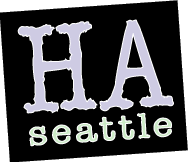UPDATE: I spoke to some folks at Fuse today and they’ve now updated their guide and removed the reference to the study in question. I have to commend them for responding to this the way organizations should.
Original post follows…..
Last night on Twitter, I saw that Fuse Washington was promoting their Progressive Voters Guide. Concerning the liquor initiative, I-1183, they wrote [emphasis mine]:
Big grocery chains and liquor distributors are back with another dangerous initiative to deregulate liquor sales in our communities. Based on an initiative that voters solidly rejected last year, I-1183 would authorize as many as five times as many retailers to sell hard liquor. As a result, our communities would see a 48 percent increase in liquor consumption and an even larger increase in problem drinking.
That’s quite a statistic, and one that I had trouble believing, so I asked them for the source. It turns out that it comes from an independent task force set up by the CDC called the “Community Guide”. And thankfully, I didn’t have to do a lot of work to demonstrate the many problems with this study, because Erik Smith at the Washington State Wire already took care of that:
The task force released a three-page report earlier this year that recommended against privatization. It wasn’t a study. It was a “finding” based on a review of 21 studies.
The finding was “based on strong evidence that privatization results in increased per-capita alcohol consumption,” the report said.
And it contained a striking statistic. In those studies, alcohol sales jumped by a whopping median figure of 48 percent after privatization.
The thing is, most of those studies had nothing to do with hard liquor. Fifteen dealt with the privatization of wine sales in the U.S. and Canada, a big push in the ‘70s and ‘80s. Two of them had to do with beer sales in Scandinavia. Only four dealt with hard liquor. And the results were all over the map, ranging from an 8 percent decrease to a 305 percent increase – never mind the type of alcohol.
The way that 48 percent figure was calculated was by lumping everything together, as if all forms of alcohol are the same, in all countries, in all time periods.
The better way to try to understand the likely consequences of moving from a state-run model for selling hard liquor to a private model is to look at other states that have done just that. As Smith writes:
There’s an easier way of looking at the question – by looking at actual government statistics. For instance, you can compare alcohol consumption in Washington with that of California, where sales are wide-open and there are eight times the number of liquor outlets per capita.
According to the National Institutes of Health, in 2007 the average Washington resident consumed 2.35 gallons of alcohol and the average Californian 2.34. No real difference at all.
There’s also the experience of Iowa and West Virginia, the two most recent states to privatize hard liquor, in 1988 and 1990. Liquor consumption remained flat after booze showed up in supermarkets. Lately it has been on the increase, just as it has been across the country. But privatization didn’t drive the states to drink.
I don’t even have that strong of an opinion on this measure. I’m voting for it, but there are definitely some good reasons not to. But it really annoys me to see an organization like Fuse – that arose in big part to counter bullshit propaganda from the right – deciding that it’s ok for them to throw out their own transparent bullshit as well.



